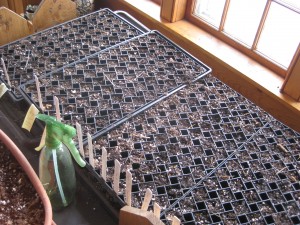Week 6: Sacred Space, Sacred Patterns
WEEK 6: Sacred Space, Sacred Patterns
“The use of rigorously defined geometric spaces, precise mathematical proportions, clearly defined lines and volumes relating to exact mathematical laws were means whereby the space of Islamic architecture, as well as its surfaces, were integrated. The principle of Unity was thereby made more manifest and the Islamic space within which Muslims carried out their ordinary lives as well as moments of worship were sacralised.” (Nasr, Islamic Art and Spirituality, 48)
Poem:
The House Faces South
When this house was built,
All houses faced south — 5/5
South towards the light, and
The mid-day sun’s heat. 5/5
Architecture aligned
—Practical knowledge. 6/5
What would thoughtful art
historians notice? 5/6
Would they notice an
old woman had lived here? 5/6
Every odd surface
is covered with flowers. 5/6
Persian rug with flowers,
Trees on Chinese fruit bowl, 6/6
Clock with German flowers,
Bird and branch sugar bowl, 6/6
Flower lamp, and flower cup,
Leaf on a model ship — 7/6
Symbol language of
a natural world. 5/5
Gendered testament
to a builder’s plan? 5/5
Our daily life a shrine
to God’s creation? 6/5
This poem is a response to the ideas in WEEK 6 about math, geometry, and the unifying nature of repeated imagery in Islamic art, specifically around mosques. I left the numbers on the right side of the poem to show that the number of syllables in each line intentionally forms small repeating patterns.
I was moved by the idea that the art becomes a part of daily life, by being engraved on practical objects like lamps, pitchers, bowls, etc. that are meant to be used. I liked the idea that using the art object in daily life (such as a water pitcher with a verse from the Qur’an carved into the spout) is a form of prayer. The ordinary becomes sacred, until everything one sees and touches is sacred, testament to the Unity and ever-present nature of God.
I was moved by the idea that the art covering the surfaces of mosques speaks a language, communicating information about the people who made or bought the art. In my poem I tried to communicate this idea that the art of a place forms a unified skin (Necipoglu, The Topkapi Scroll, 221) laden with layers of meaning. I explored what language my house would speak to an art historian, and found that the common language uniting 99% of the art on our everyday objects is plants, animals, and flowers. This makes sense, since we are environmentalists and nature is our unifying vision of the all-powerful and ultimate. Our house seems designed from the very beginning to worship nature, like a mosque designed to worship Allah. It faces the object of our worship (the sun) and every surface is covered with the name and signs of God (nature, plants, animals).
To add some nuance and depth to this idea I drew from the debate in our discussion group about the different ideas of Nasr and Necipoglu, specifically the debate whether the important thing is that the art is intentionally spiritual and universal (Nasr), or the important thing is that it contains layers of social, cultural and political meaning specific to the place and time in which it was created (Necipoglu). The builders had practical economic reasons to build this house facing south, and the old woman who lived in the house before us had gendered reasons to buy objects with repeating flower patterns on them, so there are many meanings we can glean from the art and architecture of the house, in addition to spiritual reverence for the Unity of Nature.
